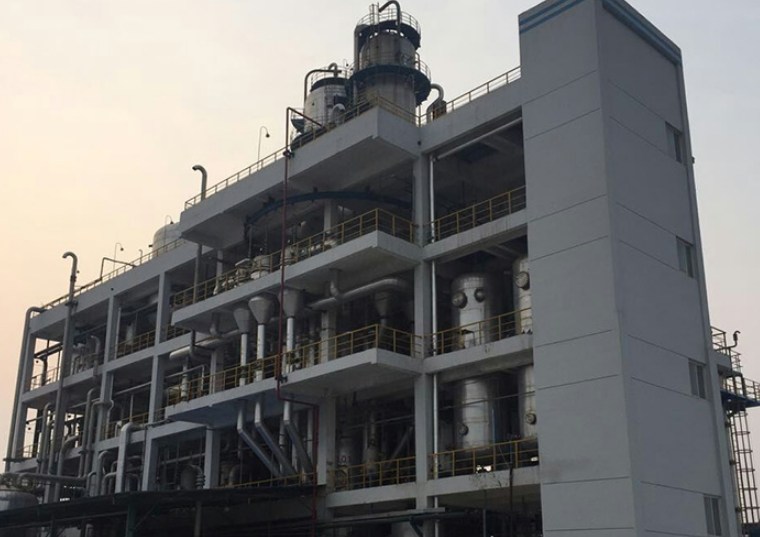Hydrogen peroxide is a chemical compound represented by the formula H2O2. It appears as a colorless liquid thicker than water's normal consistency. This compound is formed by the combination of hydrogen and oxygen molecules, as well as water and oxygen, according to its molecular structure.
This compound can oxidize microorganisms that cause infections due to the presence of oxygen molecules in its composition. Therefore, it is considered a powerful oxidizer in the market, making it the best option for highly effective disinfection, antiseptic, and natural sanitization.
It is a potent oxidizer in large amounts, and it is used by the chemical industry to manufacture detergents used to clean laundry and other equipment, as well as purify water, bleach paper, pulp, and textiles.
The demand for bulk hydrogen peroxide in the chemical industry is high, with the world's annual production of this compound reaching up to 3.8 million tons. Typically, as a raw material, this product is commercialized by the industry in an aqueous solution containing 3 percent hydrogen peroxide, with other chemicals often added for the final product. However, hydrogen peroxide can also be purchased in pure form for more intricate production purposes.
Different grades of hydrogen peroxide serve different purposes
Ranging from food-grade to household use or electrical applications, depending on the concentration. Despite its various forms, hydrogen peroxide is essentially a combination of water, hydrogen, and oxygen. Its highly reactive nature allows for its versatile use across different industries and applications.
Hydrogen peroxide is available in various grades tailored for specific purposes:
1. 3% Pharmaceutical Grade: Primarily used for wound cleaning, disinfection, and as a general antiseptic.
2. 6% Beautician Grade: Typically utilized in salons or beauty parlors as a hair coloring agent.
3. 30% Percent Reagent Grade: Commonly employed in laboratories for scientific experimentation.
4. 30% to 32% Electronic Grade: Used for cleaning electronic components and equipment.
5. 34% Technical Grade: Similar to the reagent grade but with a higher hydrogen peroxide concentration. It contains phosphorous to aid in neutralizing chlorine from the water used in dilution.
6. 34% Food Grade: The only grade approved by the Food and Drug Administration for internal use. It is utilized in food production processes, such as egg and cheese production, and in aseptic packaging for juices and milk.
7. 90%: The highest available concentration, primarily used as a source of oxygen in rocket fuels.
These varying grades cater to diverse industrial and commercial applications, ensuring effectiveness and safety in their respective uses.

Industrial applications
Around three-fifths of the world's hydrogen peroxide production is utilized in the bleaching process of the pulp and paper industry.
The second most significant industrial application of hydrogen peroxide is in the formulation of mild bleaching agents found in laundry detergents.
It is also employed in polymerization processes, for flour bleaching, and as an acne treatment method.
Hydrogen peroxide plays a crucial role in water treatment processes, aiding in the removal of organic contaminants and impurities through advanced oxidation techniques. This can also contribute to the reduction of odors.
Agricultural Application
The spontaneous decomposition of a weak hydrogen peroxide solution leads to the release of oxygen, which boosts the development of plant roots. It also aids in the treatment of root rot caused by insufficient oxygen in the roots.
Medical Application
Hydrogen peroxide is considered an environmentally friendly alternative to chlorine-based bleaches. It can be effectively applied to various surfaces for thorough disinfection. As an FDA-approved antimicrobial agent, it is generally recognized as safe.
Since the early days of its industrial production, hydrogen peroxide has been used as a wound disinfectant due to its low cost and ready availability compared to other antiseptics. A single application at a very low concentration is often sufficient.
Cosmetic Applications
Hydrogen peroxide, ranging from 8% to 3% in dilution, is utilized for hair bleaching when mixed with ammonium hydroxide. It's a common ingredient in dentistry for teeth whitening and can be combined with salt and baking soda to create homemade toothpaste. Additionally, hydrogen peroxide is sometimes employed in acne treatment.
Alternative Medicine
Practitioners of alternative medicine endorse hydrogen peroxide for treating various conditions, including influenza, emphysema, and even HIV/AIDS. There are reports of its use in treating certain cancers, either orally or through injection.
Other Uses
Hydrogen peroxide serves as a propellant in rocket propulsion systems and is involved in creating explosives such as acetone peroxide for Improvised Explosive Device (IED) applications. In households, it functions as both a disinfectant and a cleaning agent. Furthermore, hydrogen peroxide reacts with other compounds to produce light in glow sticks.
Conclusion
Hydrogen peroxide is readily available at Lab Alley, offering affordability, versatility, and effectiveness.
Widely utilized as a household disinfectant globally, hydrogen peroxide is manufactured, stored, and transported in various quantities, including bulk drums and pallet loads. It stands out as an environmentally friendly chemical, serving as a dependable method for bleaching paper pulp and cleaning hydroponic and water garden waters, aquaculture, and other industries as mentioned.
However, it's important to note that hydrogen peroxide can be caustic at higher concentrations.
















